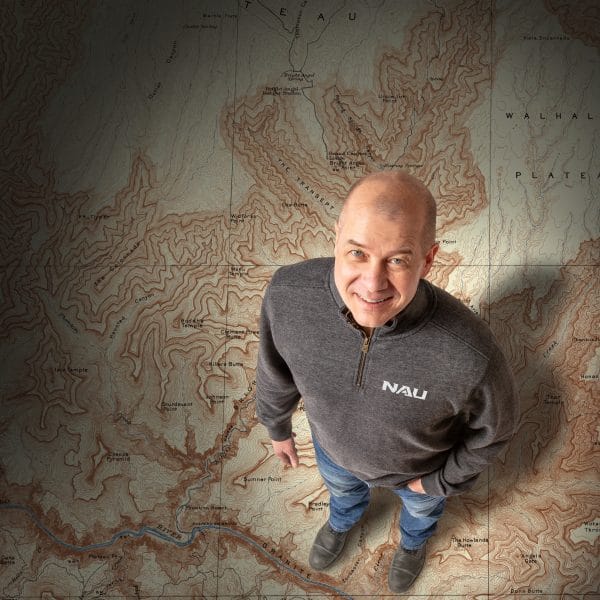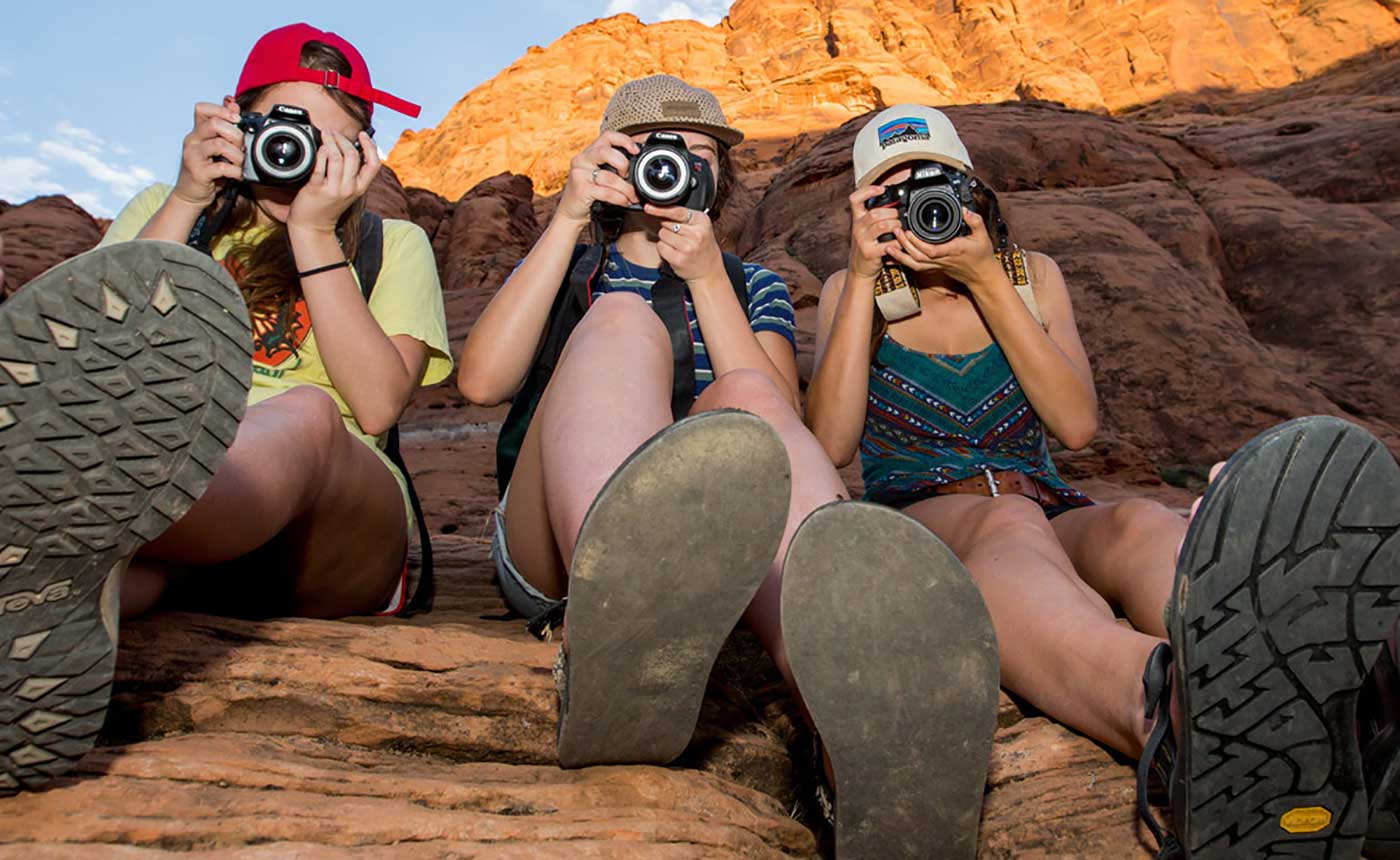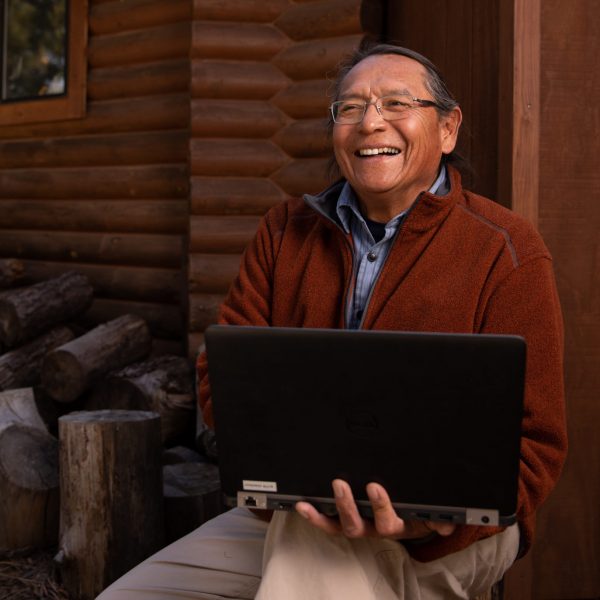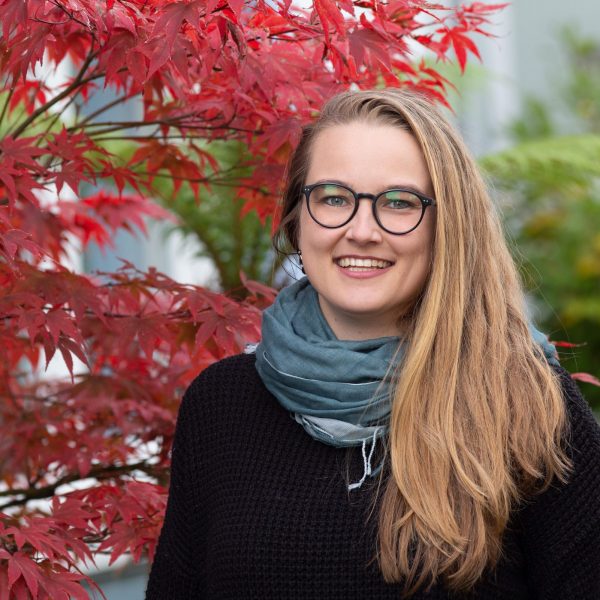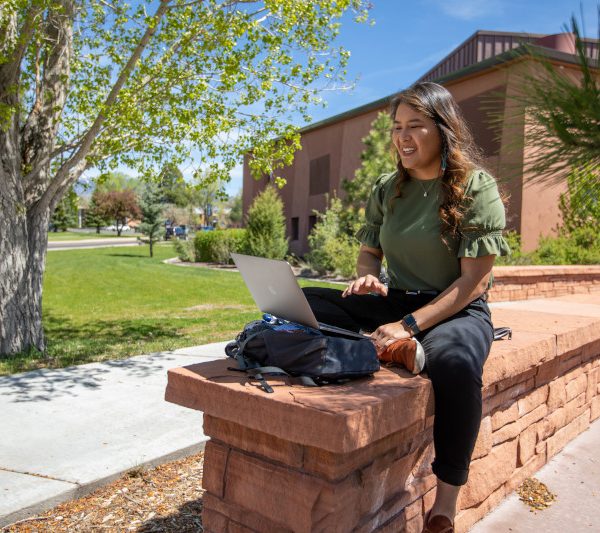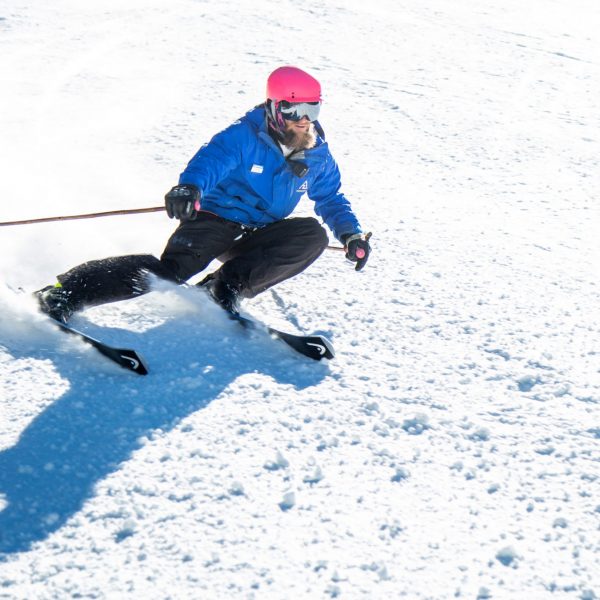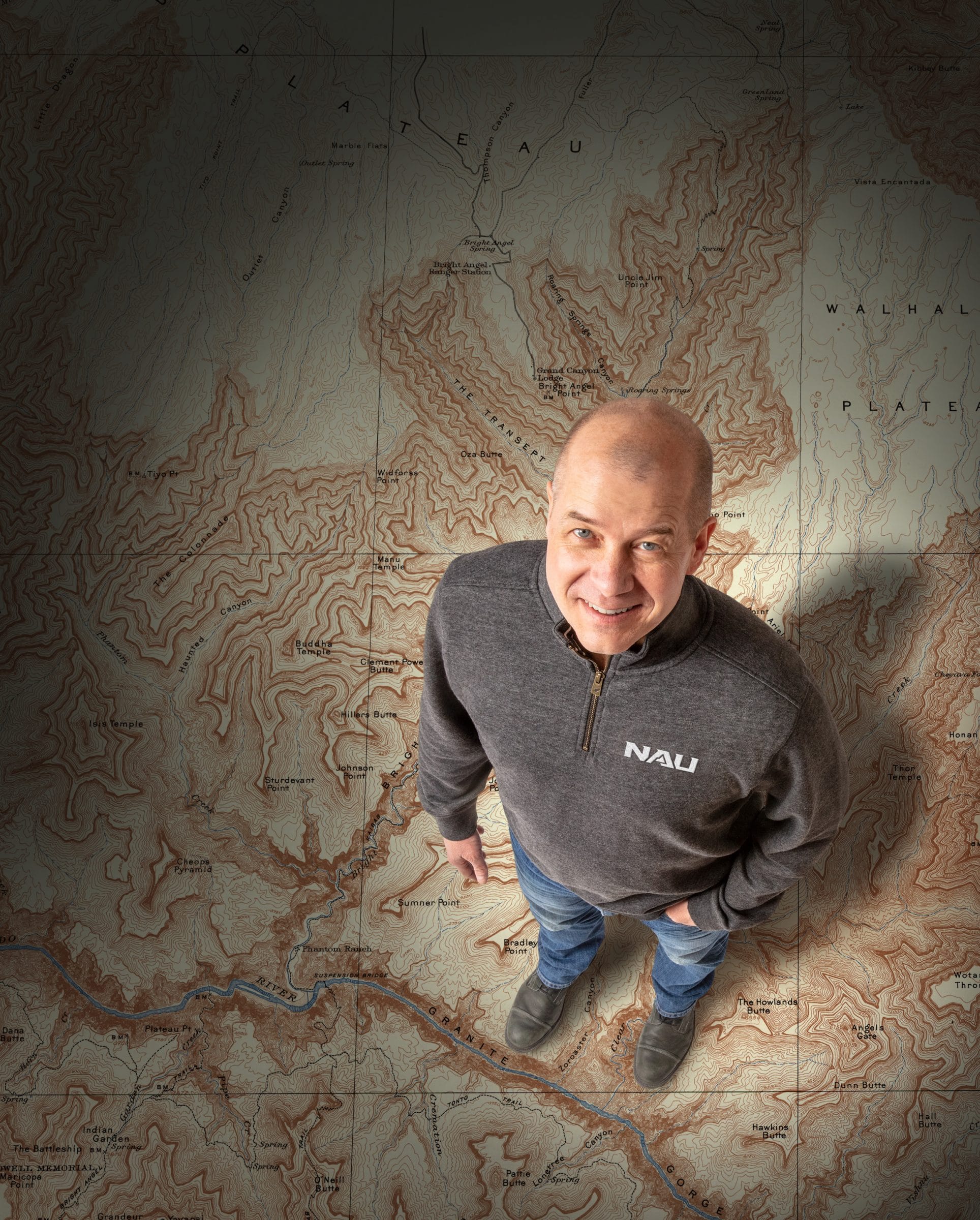
Environmental consultant and NAU alumnus Dave Cook is helping cities go greener by cleaning up contaminated land to make room for more affordable housing.
From canyoneering to consulting
Despite how far Dave Cook, MS Geology ’91, has come, he will never forget his first time leading an NAU research trip at the Grand Canyon. To conduct Cook’s research, he and his team hiked down from the North Rim to study a remote section of rocks at the base of the canyon, each lugging a week’s worth of food, water, and other gear. It was a backbreaking journey that pushed him to his limits—and he loved every minute of it.
“I was able to consume and inhale all of what the canyon had to offer,” he said. “It’s a natural laboratory and a spiritual place. There really is no place like it.”
That research trip laid the groundwork for Cook’s career. Today, he is co-owner and principal geologist at Aspect Consulting in Seattle, Washington, where he specializes in brownfield redevelopment, cleaning up urban land tainted by chemicals and contaminants.
He’s worked on several high-profile properties, including both the headquarters of the Bill and Melinda Gates Foundation and Amazon’s corporate campus. But long before Cook became a successful environmental consultant, he was an undergraduate in Ohio with an uncertain future.
The trip of a lifetime
Cook’s future came into focus when he and his father took a rafting trip through the Grand Canyon after his freshman year of college. Joining them was a family friend, a geologist who would share his insight and knowledge as they traveled down the Colorado River.
Those ten days on the river helped Cook find his calling, and he soon became a geology major. After completing his bachelor’s degree in Ohio, Cook returned to Arizona to earn his master’s. He came to Flagstaff with one goal in mind: to conduct research in the Grand Canyon. The only problem? He had no idea what part of the canyon he would focus on.
Taking initiative
As fate would have it, a scientist from the US Geological Survey’s office in Flagstaff visited one of Cook’s classes to give a presentation on a section of rocks in the Grand Canyon called the Chuar Group. Instantly, Cook was intrigued.
“The area wasn’t well known, it hadn’t been studied much before, and it was in the Grand Canyon,” Cook said. “I knew there was a research project there. It all fit together.”
Cook developed his own proposal and sought out professors to be part of the project, turning his research passion into a reality. Rod Parnell, a professor of geology and environmental sciences in NAU’s School of Earth and Sustainability, saw the potential in the proposal and became Cook’s advisor. He also saw the potential in Cook himself.
“It’s rare for a graduate student to propose a research project,” said Parnell, who remains close with Cook today. “The ones who do tend to be exceptional students, and we really value them because they have a deep and abiding interest in the work. Dave was a prime example of that.”
Deep inside the canyon
The rocks in the Chuar Group are 800 million years old, but they haven’t been studied much because the area is extremely difficult to reach.
“You basically have two choices,” Cook said. “You either hike about 15 miles from the North Rim to the base of the canyon, or you float 60 miles down the river from Lees Ferry.”
He collected samples and created a detailed map of the area, all to see what the environment was like hundreds of millions of years ago. “I found there’s pretty good evidence it was an old sea,” Cook said. “The modern equivalent would be Shark Bay in Australia.”
Cook had another takeaway that was just as enlightening. “That research project taught me so much about myself and what I could accomplish,” he said. “It had a huge impact on my career.”
Lessons beyond geology
In addition to conducting research, Cook also learned how to write a proposal, stick to a budget, and plan the logistics for a complicated project—skills he uses every day in his job as an environmental consultant. Cook’s time in Flagstaff also gave him a greater appreciation for protecting our natural resources.
“NAU opened my eyes to a different part of the country, and I loved the cultural mix there,” he said. “I was surrounded by smart, creative people who were connected to the earth and cared about the planet. I try to live that lifestyle today.”
His latest project in Seattle continues that mission. Cook is working with the state of Washington and a nonprofit developer to clean up contaminated land so more affordable housing can be built in the city. The plans call for 150 apartments with retail space near a light rail station, making the development even more sustainable. Cook sees these types of ventures—turning properties that once housed old auto shops, dry cleaners, or factories into thriving communities—as the future of urban development. But for Cook, his work is about more than injecting new life into old land. It’s also about saving the environment.
“Water, for example, is going to become more and more scarce,” he said. “So, we have to take care of the land, because if it’s contaminated, then the groundwater will become contaminated. It’s all connected.”
Giving back
Cook is heavily involved in volunteer and community service work. He is the former board president of Engineers Without Borders USA, which designs sustainable solutions for communities in need around the world. He’s traveled to Bolivia and Peru with the group to update old water pipelines, and remains active with the organization today. Closer to home, he gives presentations throughout the Pacific Northwest on brownfield redevelopment and other sustainability issues.
As a proud NAU graduate, Cook is doing all he can to give back to the university that gave him so much. “I’m so grateful for NAU and the professors I had there,” he said. “It was truly a life-changing experience.”
Once a Lumberjack, always a Lumberjack
Dave Cook is paying it forward by giving back to NAU. A few years ago, he worked with the NAU Foundation and School of Earth and Sustainability professors Rod Parnell and Abe Springer to start the Water Resources Research Support Fund. Since then, other alumni have contributed to the fund, which extends the university’s long legacy of research on water resources.
This year, Cook will serve as a mentor for the new Lumberjacks Thrive Externship Program, hosting a student for a multi-day externship at his company in Seattle. He has also returned to NAU several times to speak with students. Professor Parnell sees Cook as “the perfect alumnus.”
“I can’t think of a better person to have on campus and talk to our students than a successful alumnus like Dave,” Parnell said. “He helps students see a path from the classroom to a career they’ll love.”
Read more in Pine, the alumni magazine of Northern Arizona University.
Student impact
Initiatives like the Water Resources Research Support Fund and the Lumberjacks Thrive Externship Program are critical to NAU’s mission of building a strong career foundation, and are only a small part of our focus on sustainability. The NAU Green Fund, a student-run organization supported by NAU’s $15 per semester sustainability fee, organizes and finances green projects proposed by anyone at NAU.
As a freshman, Genevieve Conley, BS Environmental and Sustainability Studies and BA Modern Languages–Spanish Interdisciplinary Global Program ’20, helped replace plastic food containers on campus with reusable ones.
“We cut 7,000 plastic containers in one semester,” said Conley, who later became co-chair of the Green Fund. “All because of my wild idea to reduce waste.”
The real-world experience of the Green Fund prepares students to pursue their goals after graduation. “After managing the Green Fund’s budget, I’m prepared to go and address sustainability in the corporate world,” said Conley’s co-chair, Anthony Mirabito, BS Environmental and Sustainability Studies ’20.


